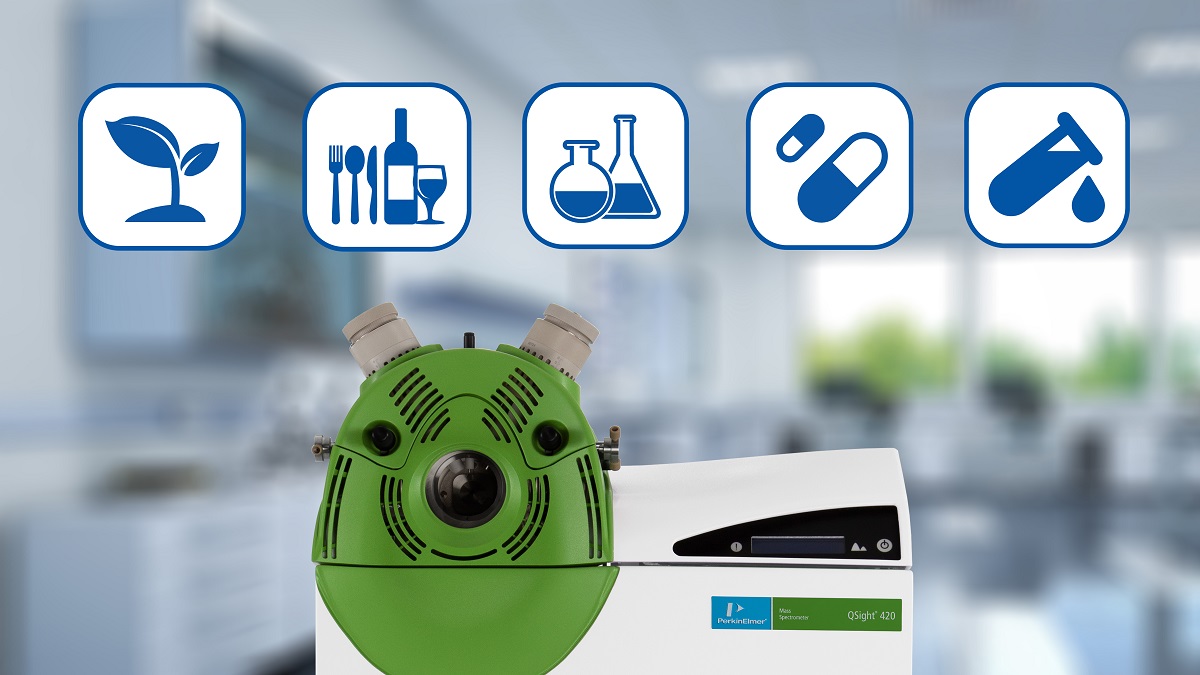Mass Spectrometry Explained: 5 Application Areas for LC/MS/MS
Say your job is to test for PFAS in extremely complex sample matrices. How can you detect at the required low levels, without the risk of interferences and contamination? Or maybe you are tasked with detection of mycotoxins in a corn crop. Is it possible to test for them with the required sensitivity? Labs that perform testing for environmental, food and beverage, forensics, pharmaceuticals, and clinical diagnostics face these types of situations every day. And for these challenges and more, they turn to liquid chromatography triple quadrupole mass spectrometry, or LC/MS/MS.
LC/MS/MS instruments use two quadrupole mass analyzers in series, with a collision cell in between, to provide higher sensitivity and selectivity for targeted analytes. In LC/MS/MS systems, the sample is first separated by liquid chromatography, and then separated analytes are introduced into the mass spectrometer, where they are ionized and filtered and finally detected. Because of its many advantages, LC/MS/MS instruments are used for detecting targeted analytes, making it a valuable solution in many fields of research and industry. Here are some of the main benefits across five key industries.
Environmental Analysis
For environmental analysis, LC/MS/MS has become the analytical technique required by Official Methods, for detecting and quantifying contaminants in soil, water, and air samples. It can be used to measure a range of environmental contaminants, pesticides, and industrial chemicals. For example, LC/MS/MS can be used to detect and quantify per- and polyfluoroalkyl substances (PFAS).
Due to the required low level of detection, LC/MS/MS provides sensitivity to detect PFAS at the low concentrations and can help minimize the risk of interference. Samples analyzed for PFAS detection are often complex, dirty matrices, which can impact the ion source and increase the need for cleaning, causing lab downtime.
A number of approaches have been investigated to improve reproducibility and robustness of LC/MS/MS methods that are subjected to matrix effects. In the PerkinElmer QSight® LC/MS/MS System, the StayClean™ Hot-Surface-Induced Desolvation (HSID)™ Technology acts as a constant cleaning agent, minimizing the need for maintenance and helping labs maximize uptime.
And to further help labs increase uptime, an improved chromatographic method was developed for EPA Method 537.1 that decreases LC/MS/MS runtimes to 10 minutes, as compared to EPA Method 537.1, with a runtime of 37 minutes, and EPA Method 533, with a runtime of 35 minutes. Read more.
Food and Beverage Analysis
For the analysis of the composition of food and beverage samples, LC/MS/MS is used to identify and quantify various compounds, such as flavor components or contaminants. In the case of mycotoxins, LC/MS/MS can be used to detect and quantify them in food samples. Mycotoxins are the byproducts of fungi found in feed and crops. The toxic secondary metabolites produced by these fungi are especially concerning in grains, corn, and cereals. Regulatory guidelines for maximum mycotoxin limits have now been implemented, with current global regulatory limits requiring a reliable, robust LC/MS/MS method for monitoring a range of mycotoxins.
The Dual Source Technology in the QSight LC/MS/MS System can provide several advantages for the analysis of mycotoxins in food samples.
- Dual Source Technology allows for the use of both electrospray ionization (ESI) and atmospheric pressure chemical ionization (APCI) in a single analysis. This can be particularly useful for the analysis of a wide range of mycotoxins with different chemical properties. The QSight LC/MS/MS System with Dual Source Technology allows for analysis of multiple mycotoxins in a single run, which can improve throughput and reduce the overall cost of analysis.
- Dual Source Technology allows for the use of two independent sources of ions, which can increase the sensitivity of the LC/MS/MS system. This can improve the limit of detection and enable the detection of trace amounts of mycotoxins in food samples.
Read here about a study for the development and validation of a multianalyte LC/MS/MS method for the fast, reliable screening, confirmation, and quantification of 12 mycotoxins in various food matrices.
Forensic Analysis
LC/MS/MS instruments are also used in forensic analysis to identify and quantify drugs of abuse in biological samples, such as urine or blood. They can be used to detect a range of drugs, including opioids, cocaine, and amphetamines.
Pharmaceutical Analysis
The pharmaceutical industry leverages the analytical capabilities of LC/MS/MS systems for drug discovery, development, and quality control. The identification and quantification of small molecules, peptides, and proteins in complex biological matrices are performed with LC/MS/MS systems. For example, LC/MS/MS can be used to measure drug levels in plasma or urine samples or to analyze the composition of protein therapeutics.
Clinical Diagnostics
LC/MS/MS instruments are increasingly being used in clinical diagnostics to measure biomarkers in biological fluids, such as blood or urine. They can be used to diagnose diseases, monitor disease progression, and evaluate the effectiveness of treatments. For example, LC/MS/MS can be used to measure the levels of various metabolites, hormones, or drugs in patient samples.
See how the PerkinElmer triple quadrupole LC/MS/MS portfolio can help labs achieve enhanced selectivity and sensitivity for the analyses of complex matrices.

